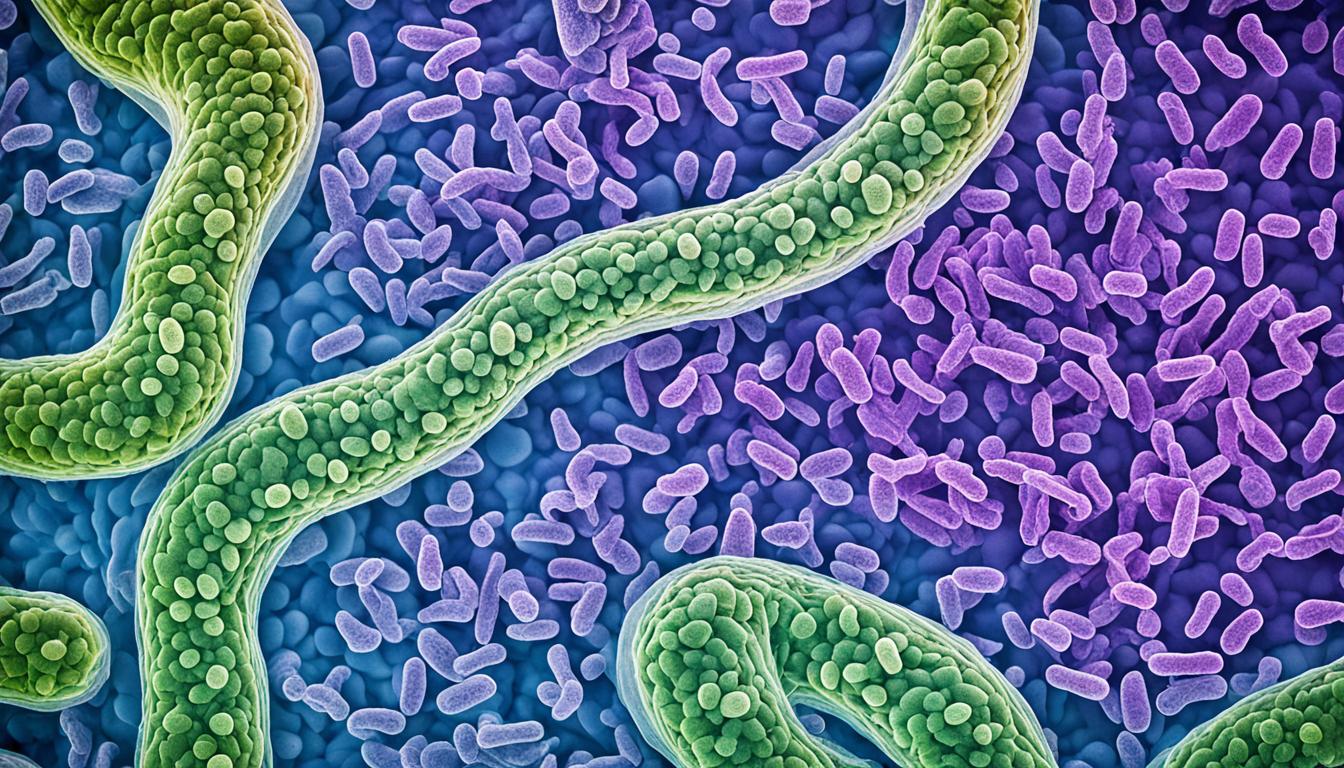Intestinal lipodystrophy is rare and causes a lack of fat under the skin in the belly. It can lead to issues such as insulin resistance and problems with handling fats in the body. People with this condition might have a big belly, diarrhea, and not absorbing nutrients well.
The cause of this disorder is not entirely clear, but it may run in families. Doctors use different tests to diagnose it, like looking closely at the person’s physical signs, their medical past, and some specific lab tests.
Treating intestinal lipodystrophy is hard. Yet, stem cell therapy is giving some a new chance. By using stem cells, which can become different types of cells, doctors aim to bring back the lost fat and improve body function in these patients.
Key Takeaways:
- Intestinal lipodystrophy is a rare metabolic disorder characterized by the loss of subcutaneous fat in the abdominal region.
- Common symptoms include abdominal distension, diarrhea, and malabsorption.
- The exact cause of intestinal lipodystrophy is believed to have a genetic component.
- Diagnosis involves a thorough physical examination, medical history review, and specialized laboratory tests.
- Treatment options are limited, but stem cell therapy shows promise in some cases.
Lipodystrophy Diagnostic Protocols and Research Updates
Diagnosing lipodystrophy is complex but crucial. Doctors look at family history and do physical exams to spot fat loss signs. They also do tests to check for metabolic issues. Following these steps helps doctors make a clear diagnosis and set up the right treatment.
Complications of Lipodystrophy
People with lipodystrophy face many problems. These include:
- Insulin resistance makes it hard for the body to control blood sugar.
- It can lead to diabetes if not tackled.
- Elevated triglyceride levels up heart disease risks.
- Nonalcoholic fatty liver disease is also common.
Prevention and Management Strategies
To avoid or handle these issues, a few steps can help:
- Diet and exercise: Sticking to a healthy lifestyle boosts metabolic health.
- Blood glucose and lipid monitoring: Keeping tabs on blood sugar and fats is crucial.
- Medical interventions: For serious cases, some might need insulin or lipid drugs.
Ongoing Research and Updates
Scientists keep digging into lipodystrophy, looking for better treatments. With every study, we learn more about its causes and treatments. Staying updated with new research helps doctors and patients see the latest treatment chances.
| Research Updates | Findings |
|---|---|
| Lipodystrophy gene mutations | Spotting key gene mutations early can aid diagnosis and treatment. |
| Novel treatment approaches | There’s ongoing study on new treatments like gene therapy. |
| Improved diagnostic tools | New technologies make diagnosing lipodystrophy more accurate and faster. |
Stem Cell Therapy for Lipodystrophy Treatment
Stem cell therapy offers hope for people with lipodystrophy. It uses the patient’s own stem cells to renew fat tissue. This helps bring back a natural look. First, doctors collect stem cells from the patient’s fat. These cells are then placed back where they are needed. This helps to grow new fat cells.
However, stem cell therapy for lipodystrophy is not widespread yet. More studies are needed to make sure it works well over time and is safe. If anyone wants to try this treatment, they should talk to a specialist. They can help figure out if it’s right for them.
Benefits of Stem Cell Therapy for Lipodystrophy:
- Potential for natural fat regeneration
- Restoration of normal fat distribution
- Utilizes the patient’s own stem cells
- Minimally invasive procedure
- May improve cosmetic appearance
| Treatment Option | Pros | Cons |
|---|---|---|
| Stem Cell Therapy | – Utilizes the patient’s own cells – Potential for natural fat regeneration – Restores normal fat distribution |
– Experimental treatment – Limited long-term data – Requires specialist consultation |
| Conventional Treatments | – May help manage symptoms – Established treatment options |
– Does not address fat loss directly – Limited effectiveness on fat distribution |
Conclusion
Lipodystrophy intestinal disease is a tricky issue that causes a loss of belly fat. It can lead to big problems like trouble processing insulin, diabetes, and a fatty liver. But, the future looks bright with new treatments like stem cell therapy.
For those dealing with lipodystrophy, talking to a specialist is key. This expert will help figure out the best steps for you. They offer advice based on your unique situation.
New research is bringing hope for better ways to diagnose and treat lipodystrophy. Staying up to date and closely working with a specialist offers the best care. This can help manage symptoms and boost quality of life.

